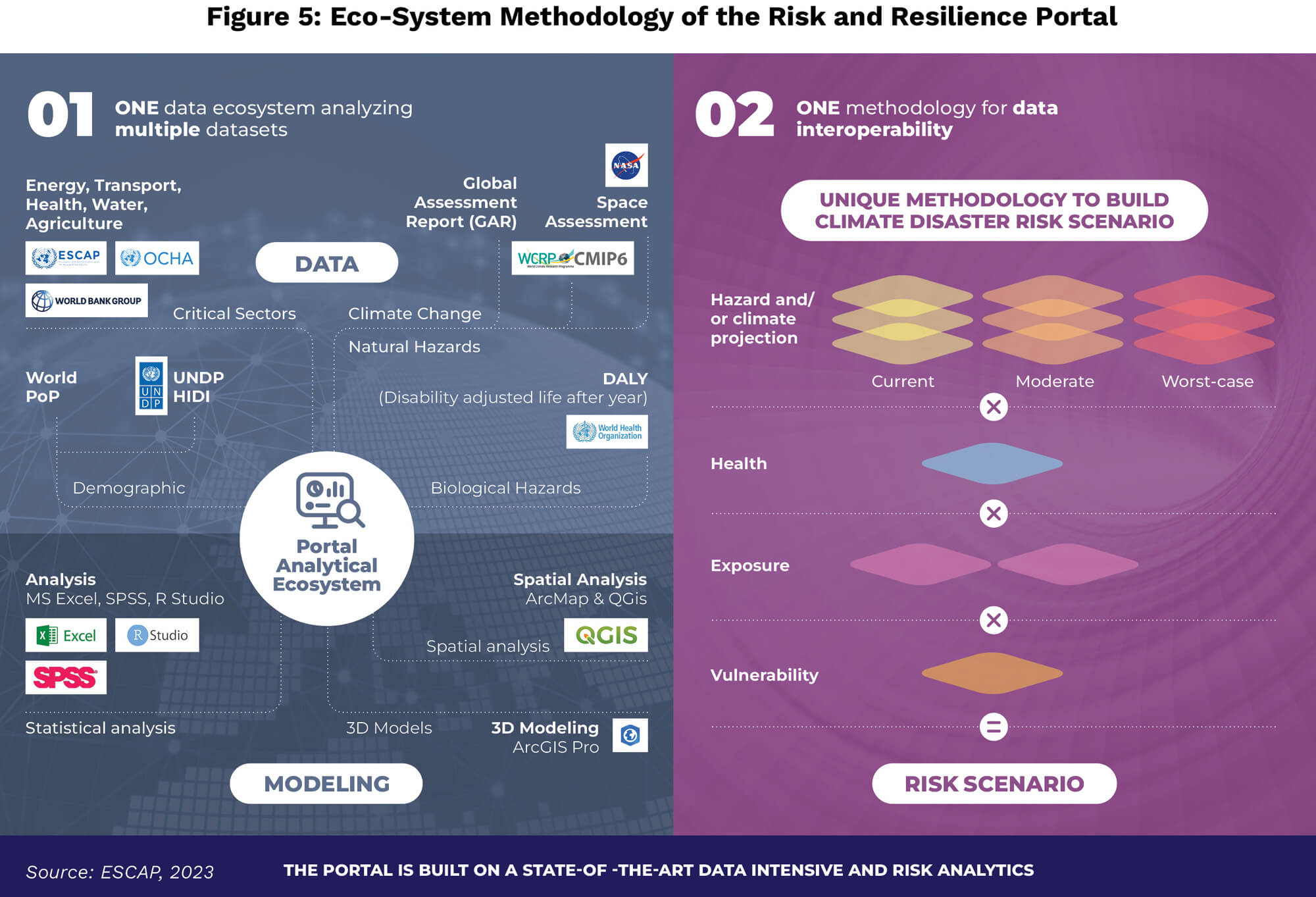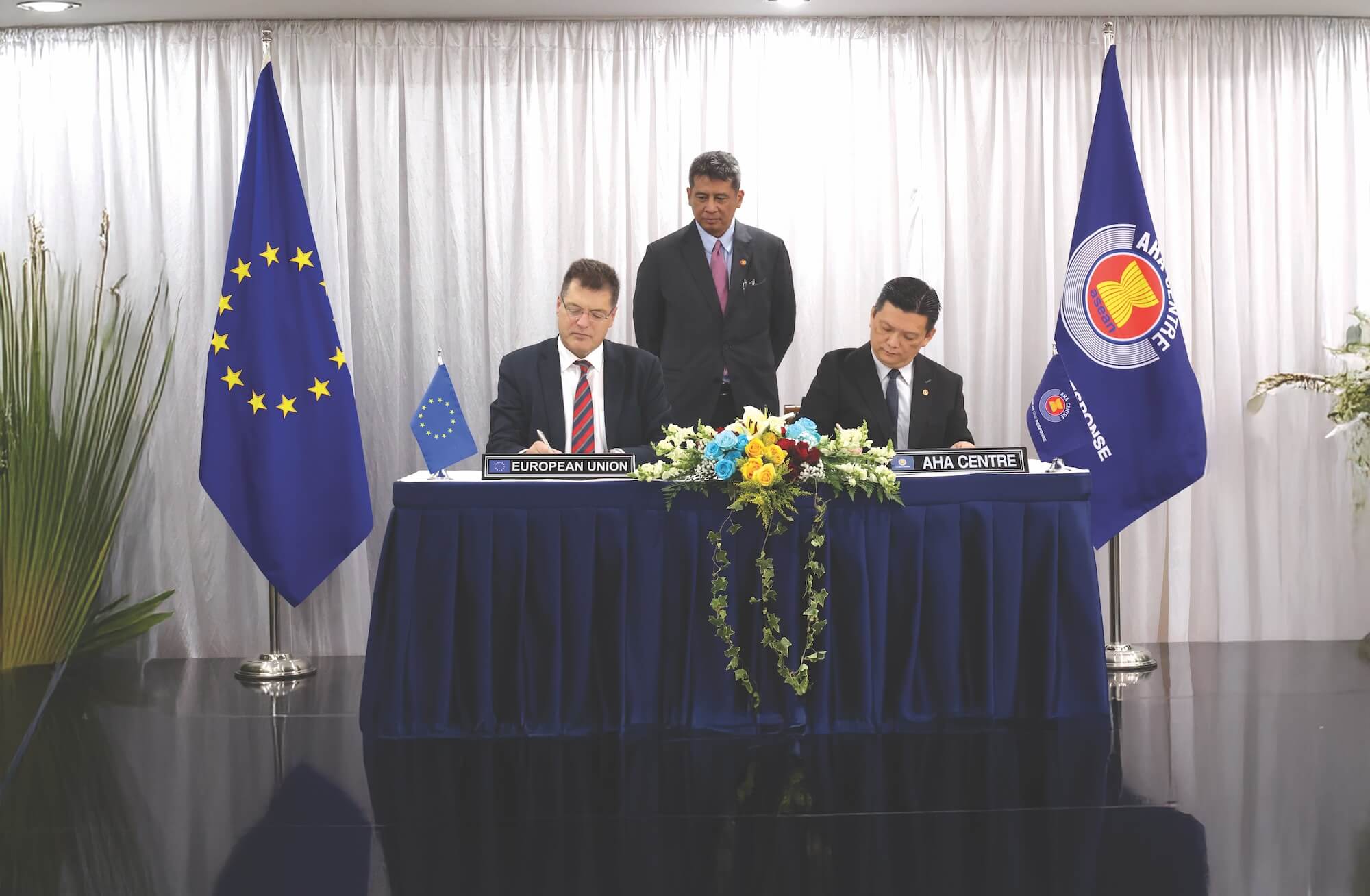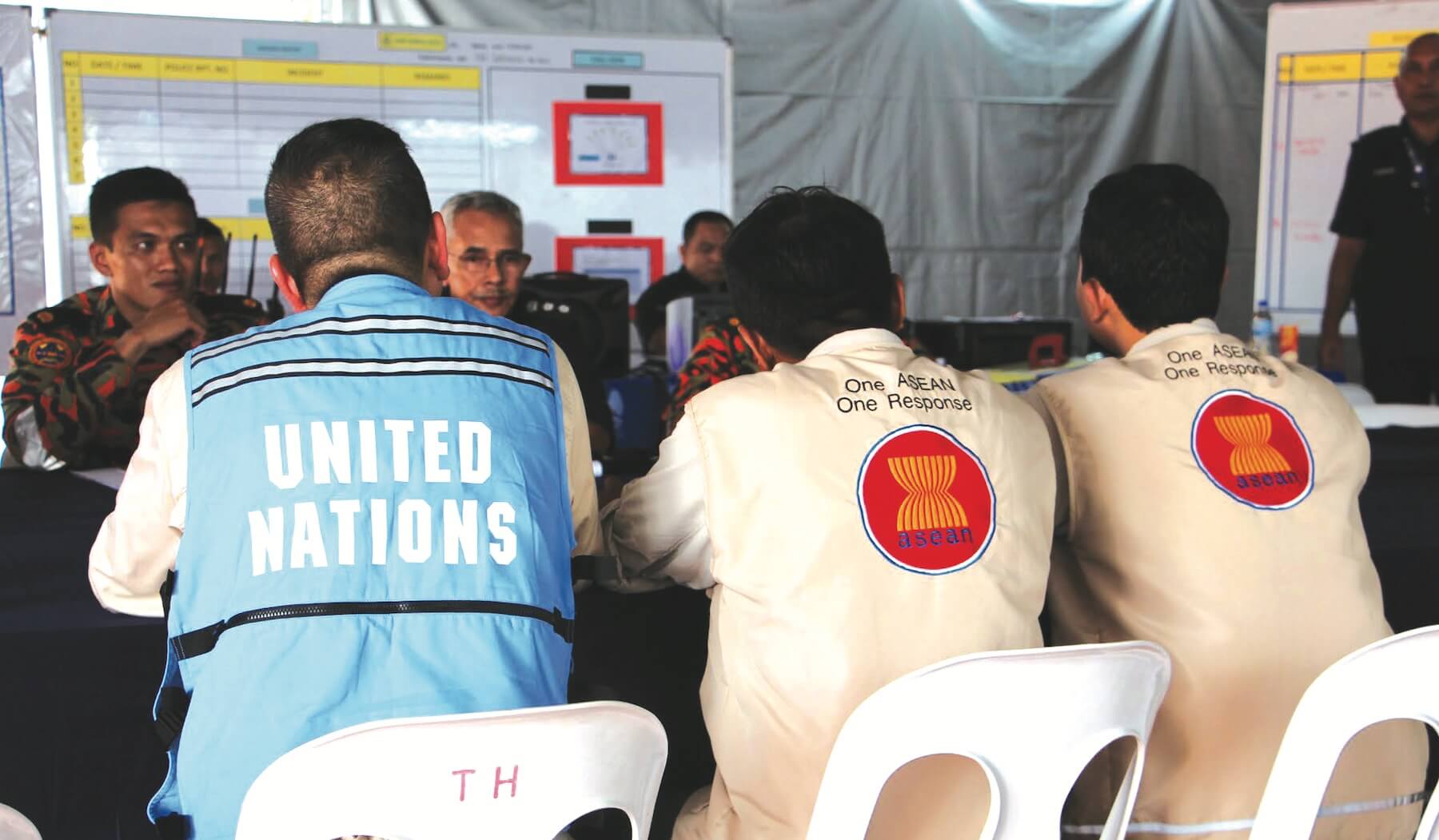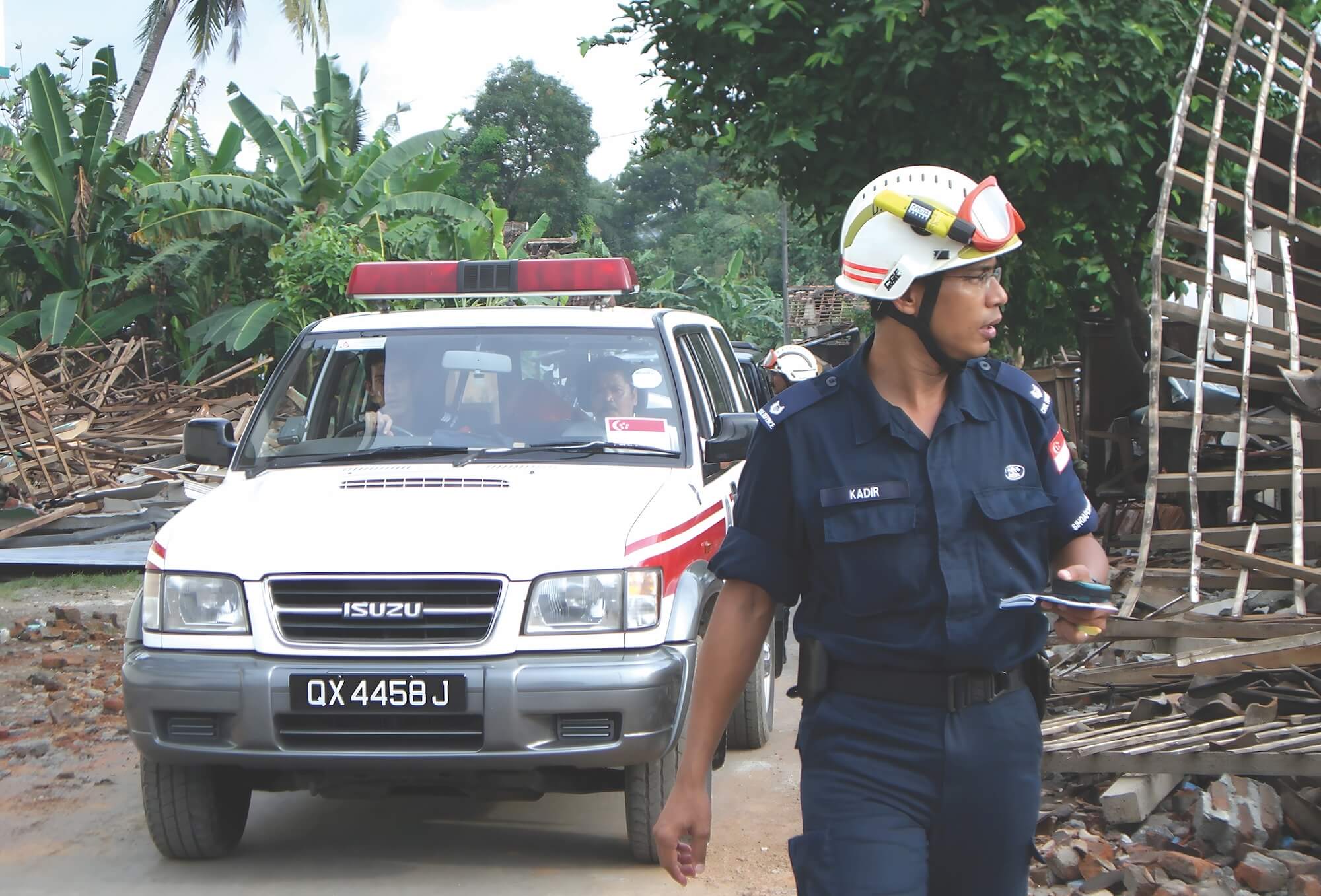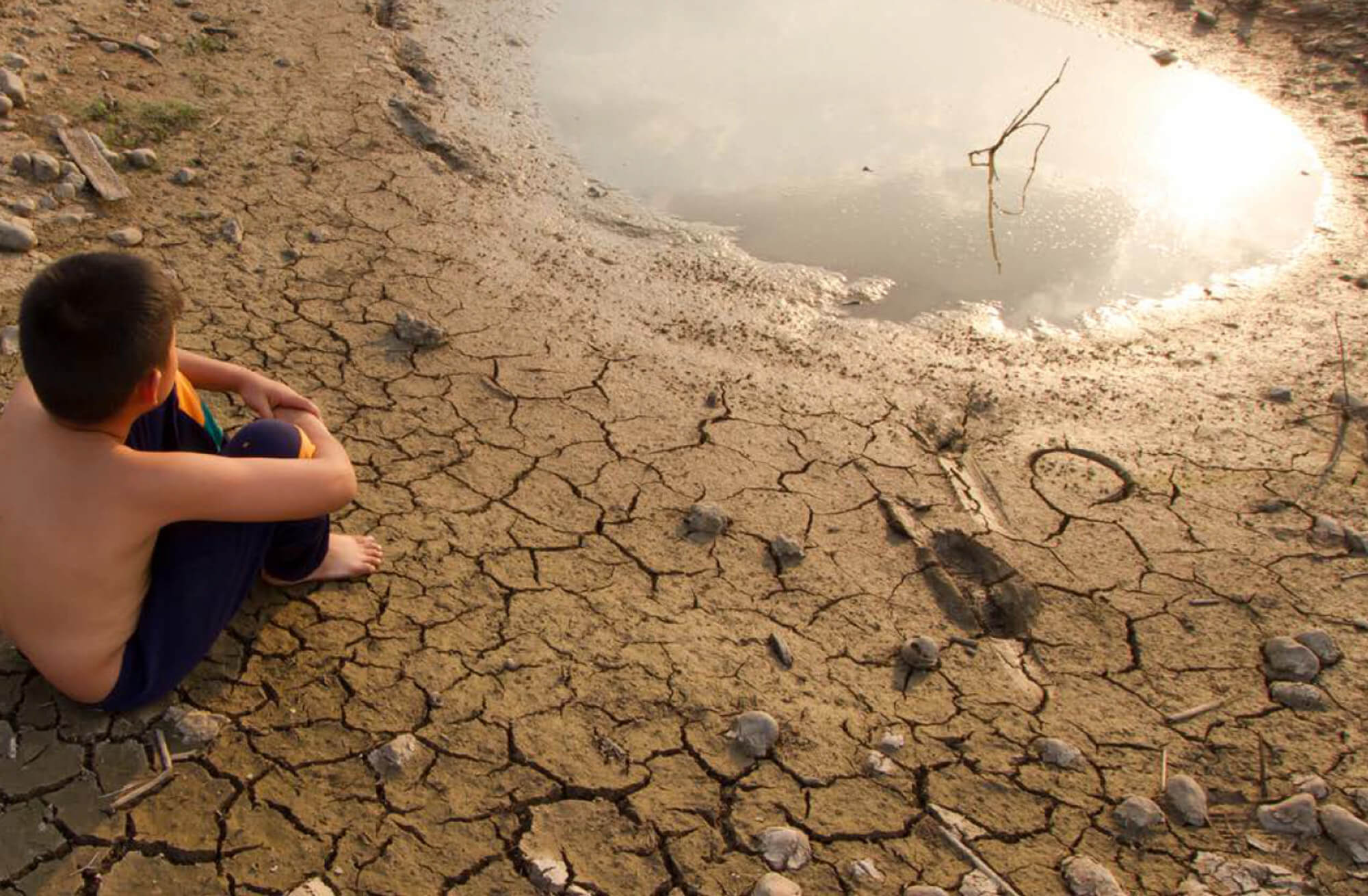




Amidst the intricate web of challenges posed by disasters, the beacon of disaster risk reduction emerges as a resolute symbol of preparedness and resilience. Within the dynamic breadth of Southeast Asia, a region deeply touched by the consequences of climate change, the Economic and Social Commission for Asia and the Pacific (ESCAP) is firmly committed to strengthening disaster resilience in partnership with the ASEAN Committee on Disaster Management.
The climate landscapes of ASEAN nations are experiencing significant changes as the levels of disaster risk continue to surge
The Asia-Pacific Disaster Report 2023, a flagship publication of ESCAP, reveals startling figures regarding the Average Annual Loss (AAL) due to disasters in the ASEAN region. The intersection of disaster risks, income inequality, and poverty drives persistent inequality, affecting least-developed countries in Southeast Asia. ESCAP estimates that investments needed for transformative adaptation in the Asia-Pacific region stand at 144.74 billion US dollars and is expected to increase to 150.50 billion US dollars and 155 billion US dollars for 1.5°C and 2°C climate scenarios, respectively. The Southeast Asia subregion accounts for 24 per cent of the total absolute adaptation costs.
Figure 1 showcases the 15 countries that are expected to encounter the most substantial disaster losses, measured as a percentage of their GDP. Notably, within Southeast Asia, Indonesia, Thailand, the Philippines, Viet Nam, and Malaysia rank highest in terms of absolute losses. On the other hand, Cambodia, Myanmar, the Lao PDR, the Philippines, Viet Nam, and Thailand exhibit the greatest losses as a percentage of their respective GDP.
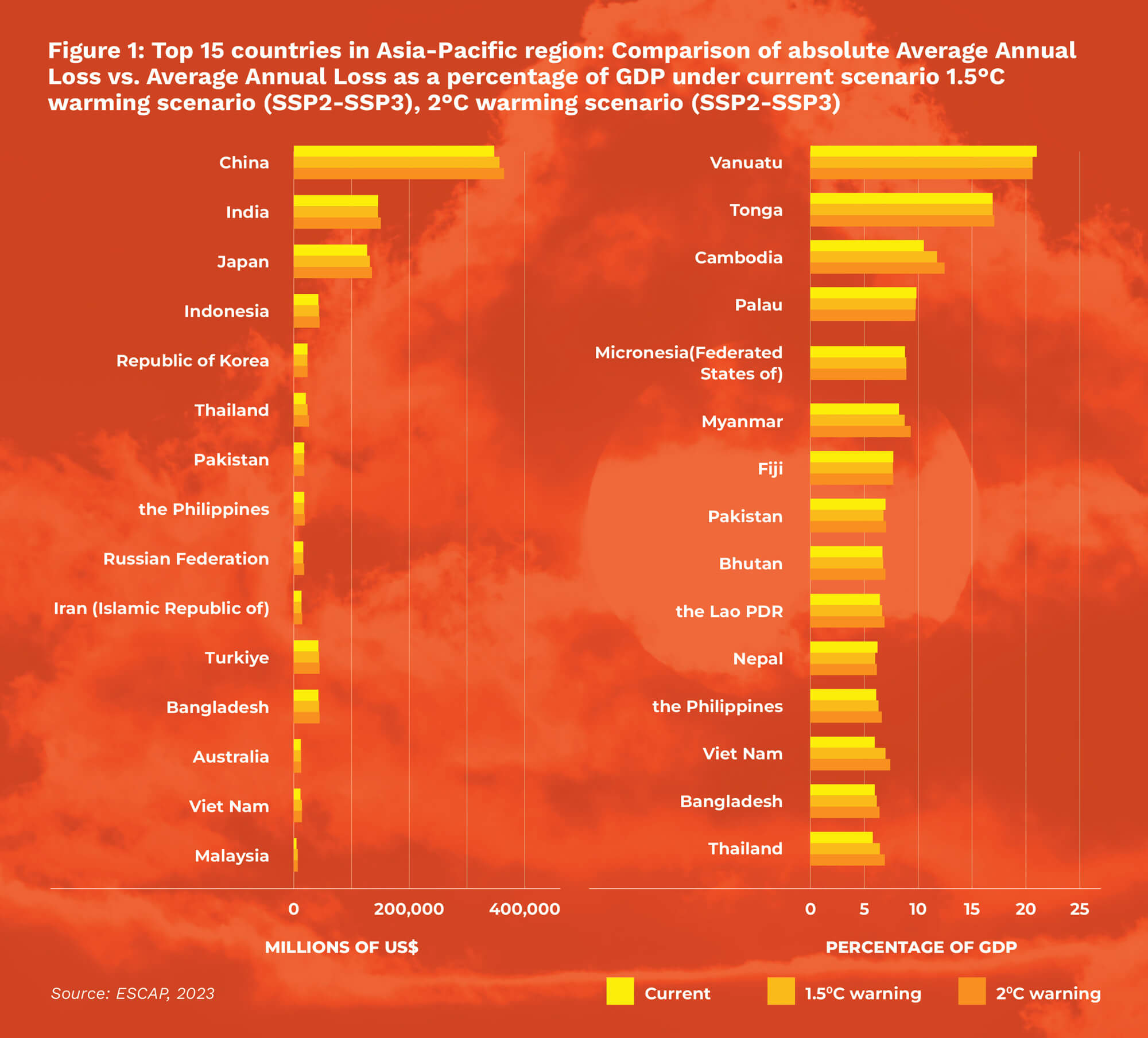
Downscaling climate data offers benefits to adapting in a changing riskscape
In the face of ever-evolving climate patterns, the significance of climate data downscaling cannot be overstated. Downscaling delivers a more accurate and detailed picture of future climate scenarios by refining global-scale climate models to localised scales. This level of granularity is essential for making informed disaster management decisions. Climate projections derived from downscaling techniques allow stakeholders to anticipate not only the timing but also the specific impacts of climate events.
Consider a coastal city that is vulnerable to rising sea levels, such as Singapore. While global climate models may predict overall sea level rise, downscaling can elucidate local variations, enabling precise assessments of increased flood or storm surge risks, thus informing urban planning for the future. Figure 2 reveals the highest population exposure to multiple climate hazards, including droughts, and floods. For the Southeast Asian region, close to 100 per cent of the population are exposed to flood risk, and 40 per cent are further exposed to drought risk. This vulnerability remains consistent across varying global warming scenarios, encompassing present conditions as well as the projected 1.5°C and 2°C warming scenarios, emphasising the need for proactive strategies to comprehensively address and mitigate the implications of such scenarios in an evolving climate landscape.
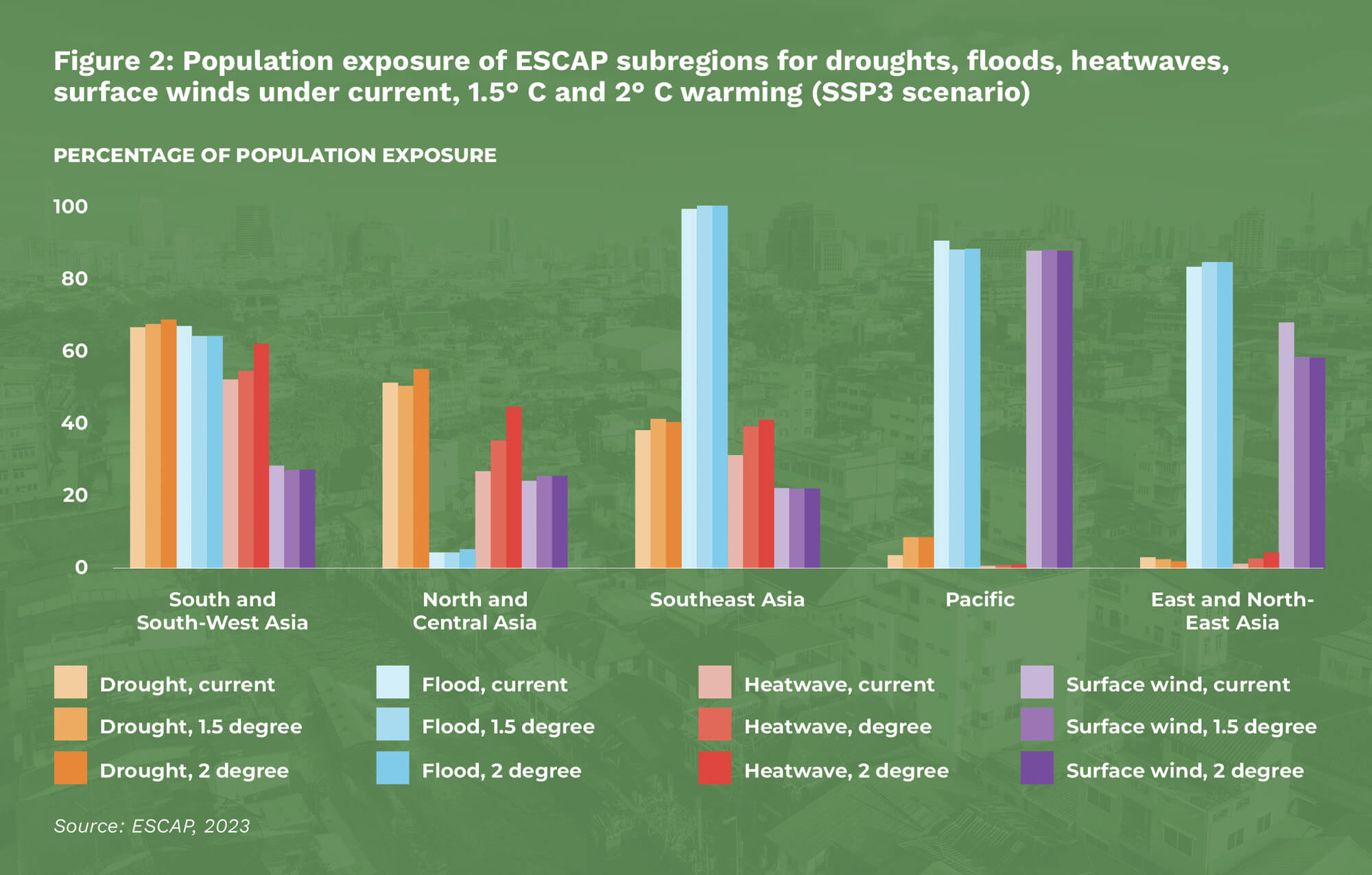
The efficacy of climate data lies not just in its generation but in its translation into actionable insights
Recent assessment reports by the Intergovernmental Panel on Climate Change (IPCC) underscore the critical role of localised projections in shaping adaptive strategies. These are more than simply numbers; they serve as a guide for communities, governments, and organisations as they tailor their responses to the unique problems of their surroundings.
Adapting data to the needs of various stakeholders is one of the keys to this translation; this is especially important to ensure the resilience of critical sectors. By tailoring climate data to localised contexts, stakeholders can gain invaluable insights into the availability and distribution of essential services, such as water resources, energy, health infrastructure and telecommunications, to name a few. This, in turn, empowers authorities to make informed decisions, mitigating the risks to their critical infrastructure.
ESCAP’s commitment to continuing support to the ASEAN Committee on Disaster Management, through bringing global models to the regional, subregional, and national levels, has been demonstrated through various initiatives. Real-world success demonstrates the value of localised data.
Climate data offers a gateway to risk-informed policy and adaptation action
Working together with ASEAN, ESCAP supported forward-thinking initiatives that use climate data to manage drought risk proactively. Namely, the analytical, Ready for the Dry Years (2020) publication highlighted the intensifying drought risk across Southeast Asia. Acknowledging the importance of collective action, the ASEAN Declaration on Strengthening Adaptation to Drought was adopted in 2020 and followed by the ASEAN Regional Plan of Action for Adaptation to Drought 2021– 2025. These initiatives provide a roadmap for translating data-driven insights into tangible policies, and subregional and national action that build resilience in the face of slow-onset climate hazards (Figure 3).
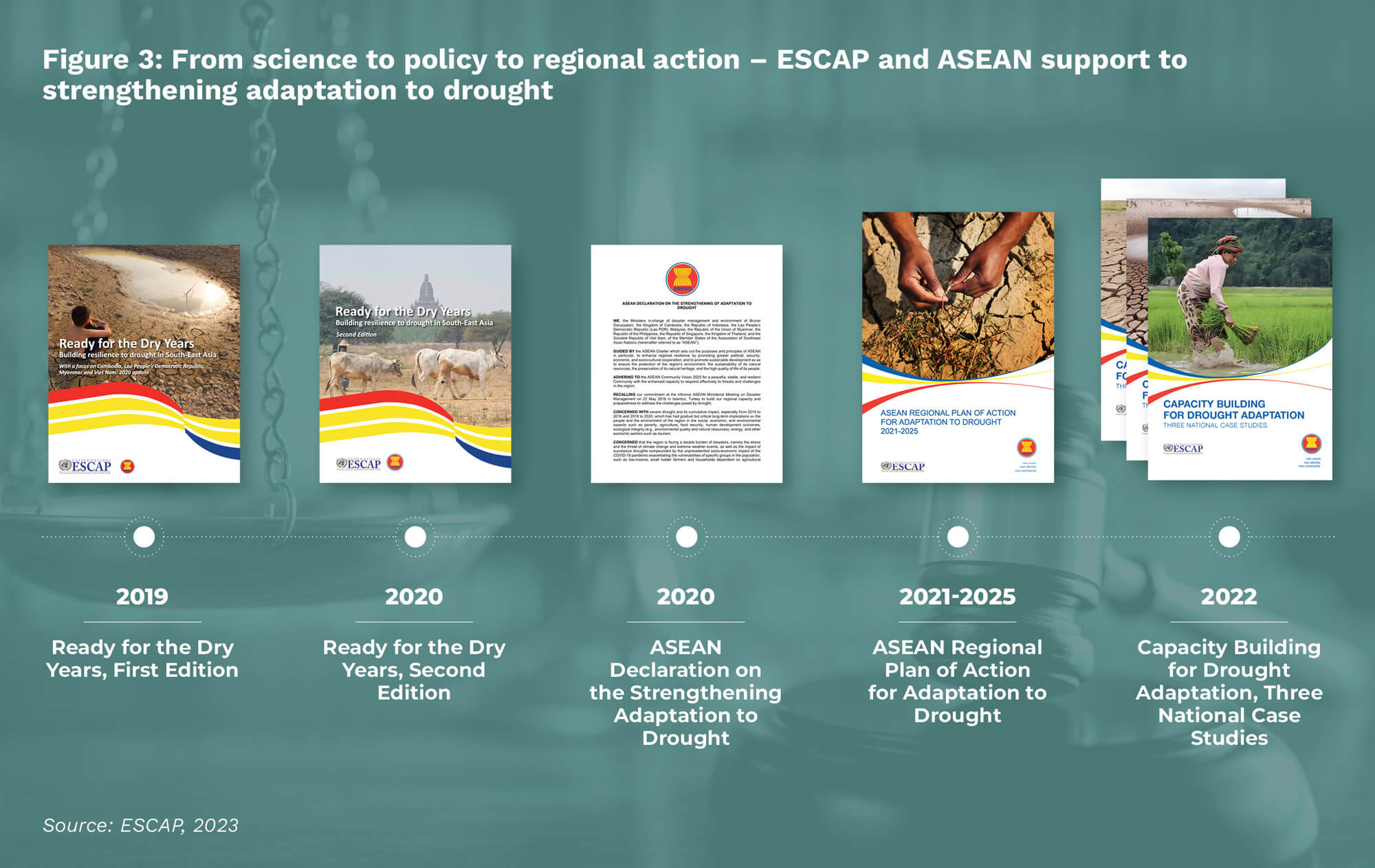
A multi-hazard, multi-stakeholder approach to climate and disaster risk foresight is needed
ESCAP has also been working to support ASEAN Climate Outlook Forum (ASEANCOF) on seasonal impact-based forecasting (IBF). Establishing a shared understanding of the sectoral impacts of seasonal weather events across the subregion is a core goal of climate outlook forums, which at the national level are commonly referred to as “Monsoon Forums.” By downscaling global models to the subregional and sub-seasonal level and then integrating with vulnerability and exposure data, ASEAN Member States can gauge potential seasonal climate impacts on populations and livelihoods collectively and thus actively prepare for the incoming conditions.
ESCAP’s Trust Fund for Tsunami Disaster and Climate Preparedness further supports ASEAN member states through the Regional Multi-Hazard Early Warning System (RIMES) to hold national level monsoon forums. Supporting national hydrological and meteorological services to contextualise seasonal climate forecasts and communicate these forecasts across a wide array of weather information users has supported local governments to cultivate cultures of preparedness and ultimately reduce the loss of lives and livelihoods due to climate hazards.
This collaborative endeavour is an illustration of how data-driven methodologies may improve seasonal readiness across important sectors.
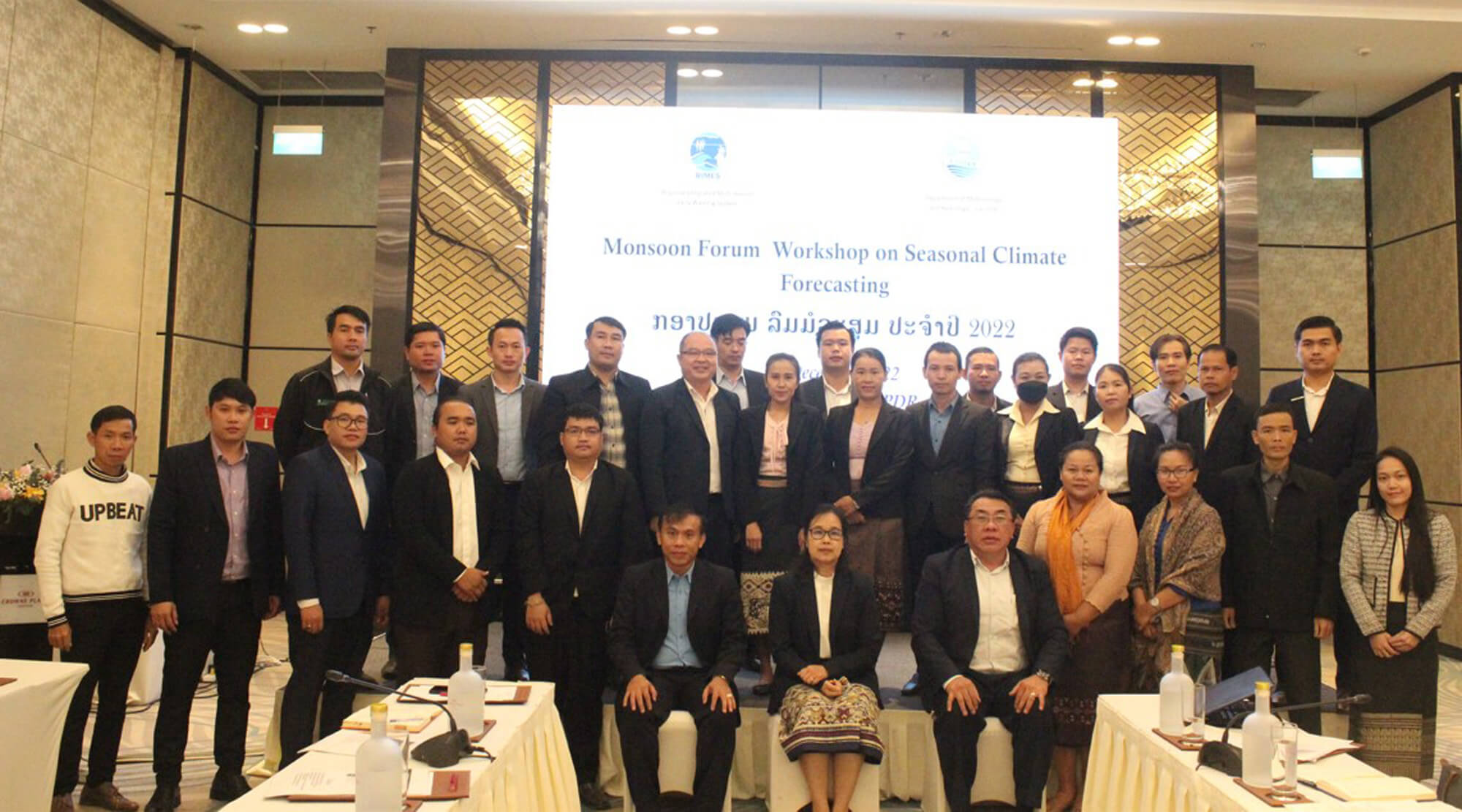
Disaster and climate knowledge emerges as an instrument of empowerment in the age of digitalisation
The ESCAP’s Risk and Resilience Portal serves to ensure that climate knowledge is accessible to all. This online tool supports ASEAN Member States by contextualising climate data by integrating exposure and vulnerability specificities. This innovative platform amalgamates data, tools, and interactive maps, presenting an invaluable repository of resources to those at the forefront of disaster management. From visualising disaster hotspots to conducting meticulous assessments of infrastructure vulnerabilities, the portal empowers users to make informed decisions firmly rooted in data-driven insights. Figure 5 explains the ecosystem of the portal, including both its ability to analyse multiple datasets and data interoperability.
The journey from global models to localised insights illustrates ESCAP’s unwavering dedication to creating a culture of resilience and preparedness throughout the ASEAN region.
Looking forward
Resilience is a shared responsibility as Southeast Asia navigates the complicated landscape of climate change-related disasters. The urgency of the situation necessitates sustained collaboration, innovative solutions, and data-driven decision-making. The foundation of ASEAN’s disaster resilience is stakeholder involvement, downscaling of climatic data, and catastrophe management. The benefits of downscaling techniques and climate projections are undeniable, offering a pathway to precision in preparedness. By customising data for specific purposes and fostering collaboration, stakeholders can harness the true potential of data. ESCAP’s unwavering dedication to disaster resilience through the risk and resilience portal, flagship publication, subregional report, and multiple other projects serves as a beacon of hope in an era marked by climate uncertainties. By seamlessly blending data-driven insights with practical applications, ESCAP propels ASEAN toward a future where disasters are met with resilience and resolve.
